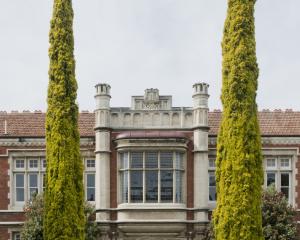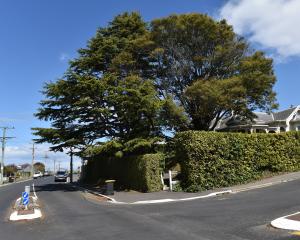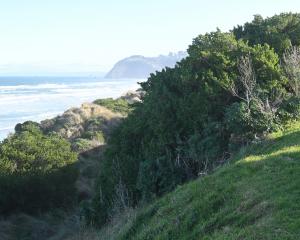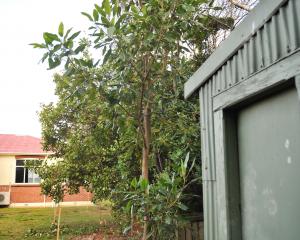

As far as I know, there are no naturally growing southern rata trees in Otago north of Taieri Mouth and east of Lakes Wakatipu and Wanaka. They like it wet, and most of Otago isn’t. Dunedin might not seem all that dry, but it hasn’t been consistently moist enough in the past to coax southern rata trees up the coast from the Catlins, Bull Creek and Moturata/Taieri Island to the slopes around Otago Harbour.
Despite that, these swarthy, bushy trees are fairly common in Dunedin gardens, and Dunedin City Council staff have planted quite a few - such as the ones beside Andersons Bay inlet and in Queens Gardens. The city’s best-known specimen has to be the venerable veteran in the grounds of Knox Church in George St. As the photo shows, it seems to want to spread more than it wants to soar - a bit like its huge, old coastal pohutukawa cousins in the North Island.

The southern rata is famously one of very few native trees that grow on the subantarctic Auckland Islands/Motu Maha/Maungahuka to the south of Rakiura/Stewart Island. Now and then, on a calm summer day, the few permitted visitors to the Auckland Islands can enjoy the almost subtropical sight and sound of parakeets flitting through a carpet of undulating scarlet along the eastern shore.
Among the earlier visitors to those islands were whalers and sealers (in the early 1800s); Maori and Moriori slaves (1842-62); British people in the short-lived settlement of Hardwicke (1849-52); the survivors of several shipwrecks; the crew of the German ship Erlangen (1939); and the New Zealand coast watchers of World War 2. What did they have in common? They probably all used southern rata wood to cook food, keep themselves warm, or (in the case of Erlangen) to fuel their ship.
And they all probably made whatever axes, saws or other tools they used quite blunt in the process. Rata wood burns with a lot of heat, but it’s very hard (Metrosideros = heartwood of iron).
Bright scarlet flowers in summer aren’t the only splash of colour from southern rata. (The umbellata part of the scientific name means that the bunches of flowers look like umbels or floral umbrellas.)
Some of the older leaves change to exquisite shades of red, orange, or buttery yellow before they fall off. This happens on some gum trees and other myrtle family plants too.
DNA studies show that the southern rata is the closest living relative of the ancestor of all 50 Metrosideros species scattered throughout the Pacific. As the Pasifika influence on New Zealand culture grows, southern rata can be seen as a key symbol of our shared Pacific identity. It’s one of Otago’s living links to Samoa, Fiji, the Cook Islands, Tahiti, Hawaii et al. Something to ponder the next time you see a southern rata as you travel through the South this summer.













